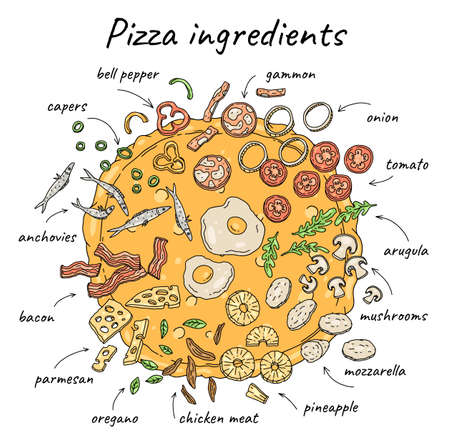Understanding Dog Food Labels
Navigating the pet food aisle can feel overwhelming, especially with so many choices and claims on every bag or can. To make informed decisions for your dog’s health, it’s essential to understand how to read and interpret dog food labels as they appear in the US market. Start by looking at the front of the package; terms like “complete and balanced” indicate that the food meets standards set by the Association of American Feed Control Officials (AAFCO). Next, turn to the ingredient list, which is organized in descending order by weight. This means the first few ingredients are present in the highest amounts. Keep an eye out for whole protein sources like chicken, beef, or salmon near the top of the list, as these provide essential nutrients. Also, review the guaranteed analysis panel for information about crude protein, fat, fiber, and moisture content—these numbers help you compare products at a glance. Finally, check for any added vitamins and minerals that ensure comprehensive nutrition. Familiarizing yourself with these key sections empowers you to choose foods that truly support your dogs well-being.
Key Ingredients That Benefit Your Dog
When it comes to supporting your dogs long-term health, choosing the right ingredients in their food makes all the difference. High-quality dog foods provide a balanced mix of nutrients, helping your furry friend maintain a healthy weight, shiny coat, and strong immune system. Here are some essential ingredients to look for when selecting dog food:
High-Quality Proteins
Proteins serve as the building blocks for your dogs muscles, organs, and overall body maintenance. Look for real meat sources like chicken, beef, turkey, lamb, or fish as the first ingredient. These animal-based proteins are more digestible and better suited to your dogs nutritional needs compared to by-products or fillers.
Whole Grains
Whole grains such as brown rice, barley, and oatmeal provide valuable fiber for digestion and long-lasting energy. Unlike processed grains or corn fillers, whole grains retain their natural nutrients and help regulate your dog’s blood sugar levels.
Fruits and Vegetables
Fruits and vegetables supply antioxidants, vitamins, and minerals that support immune function and promote healthy skin and coat. Ingredients like sweet potatoes, carrots, blueberries, peas, and spinach are excellent additions to your dogs diet.
Comparison of Beneficial Dog Food Ingredients
| Ingredient Type | Examples | Main Benefits |
|---|---|---|
| Proteins | Chicken, Beef, Fish | Muscle development, tissue repair |
| Whole Grains | Brown Rice, Oatmeal, Barley | Digestive health, sustained energy |
| Fruits | Blueberries, Apples | Antioxidants, vitamins C & A |
| Vegetables | Sweet Potatoes, Carrots | Fiber, beta-carotene for eye health |
Choosing Whole Foods Over Fillers
Selecting dog food with these nutrient-dense ingredients ensures your pet receives optimal nourishment without unnecessary additives. Remember: the closer an ingredient is to its natural form—and the higher it appears on the label—the more beneficial it is for your dogs well-being.

3. Ingredients to Avoid for Your Dogs Health
When it comes to choosing the best food for your dog, understanding which ingredients to avoid is just as important as knowing what to look for. Many commercial dog foods contain additives and fillers that may negatively impact your pet’s health over time. Here are some common ingredients you should steer clear of:
Artificial Preservatives
Chemicals such as BHA (butylated hydroxyanisole), BHT (butylated hydroxytoluene), and ethoxyquin are often used to extend shelf life but have been linked to potential health risks. These preservatives can contribute to allergies or even more serious long-term health issues in dogs.
Fillers with Little Nutritional Value
Ingredients like corn, wheat, and soy are frequently used as inexpensive fillers in dog food. While these may bulk up the kibble, they offer minimal nutritional benefit and can sometimes trigger food sensitivities or digestive upset in certain dogs. Look for whole grains like brown rice or oatmeal as healthier alternatives if grains are included at all.
Artificial Colors and Flavors
While bright colors might make dog food more appealing on store shelves, artificial dyes such as Red 40, Yellow 5, and Blue 2 serve no purpose for your dog’s nutrition and may cause adverse reactions. Similarly, artificial flavors are used to mask poor-quality ingredients—opt for foods with natural flavorings from real meats or vegetables instead.
Meat Byproducts and Unnamed Meats
Be cautious of vague terms like “meat meal” or “animal byproduct.” These can refer to low-quality protein sources that may include parts of animals not typically consumed by humans. Instead, choose foods that list specific meats like “chicken,” “beef,” or “salmon” as the primary protein source for better quality control and digestibility.
Reading Labels Carefully
The key takeaway is to read ingredient labels thoroughly before purchasing any commercial dog food. By avoiding harmful additives, unnecessary fillers, and unclear meat sources, you’ll support your dog’s long-term health and well-being.
4. Special Dietary Needs and Allergies
Just like people, dogs can have unique dietary needs or allergies that require special attention when selecting their food. Identifying and addressing these sensitivities is crucial for your dog’s overall health and well-being. Some dogs are prone to food allergies or intolerances, which can lead to symptoms like itching, digestive upset, chronic ear infections, or even skin problems.
Common Dog Food Allergens
| Common Allergen | Typical Symptoms | Alternatives |
|---|---|---|
| Beef | Itchy skin, digestive issues | Lamb, fish, turkey |
| Dairy | Gas, diarrhea, itchy ears | Lactose-free options, non-dairy formulas |
| Chicken | Skin irritation, paw licking | Duck, salmon, venison |
| Wheat/Grains | Upset stomach, rashes | Grain-free recipes (sweet potato, pea) |
| Soy/Corn | Bloating, loose stool | Pumpkin, brown rice (if tolerated) |
Special Dietary Considerations for Sensitive Stomachs or Health Conditions
If your dog has a sensitive stomach or a specific health condition such as kidney disease, diabetes, or obesity, choosing the right ingredients becomes even more critical. Look for dog foods labeled as “limited ingredient” or “sensitive stomach,” which often contain easily digestible proteins and carbohydrates while minimizing potential irritants. For dogs with chronic conditions, consult with your veterinarian about prescription diets formulated to support those specific needs.
Recommendations:
- Sensitive Stomachs: Opt for foods with single-source animal proteins and simple carbohydrates like rice or potato.
- Kidney Disease: Choose low-phosphorus and moderate-protein options recommended by your vet.
- Obesity: Select lower-calorie formulas with added fiber to promote fullness without extra calories.
- Diabetes: Look for foods with consistent carbohydrate sources and avoid high-sugar ingredients.
- Skin Allergies: Seek out omega-3 fatty acids (from fish oil) and avoid artificial additives.
Your dog’s nutrition should always be tailored to their individual needs. If you notice persistent symptoms or have concerns about their diet, work closely with your veterinarian to identify problem ingredients and find a formula that supports their health and happiness.
5. Trends in American Dog Food Choices
Over the past decade, American pet owners have become increasingly attentive to the ingredients in their dogs’ food, leading to several key trends that reflect both health concerns and lifestyle choices. Among the most popular options are grain-free diets, organic dog foods, and limited-ingredient formulas. Each of these trends has unique potential benefits and considerations for your furry friend’s well-being.
Grain-Free Diets
Grain-free dog food is marketed as a solution for pets with grain allergies or sensitivities. These formulas often substitute grains with potatoes, peas, or lentils. While some dogs may benefit from avoiding certain grains, it’s important to note that the FDA has investigated possible links between grain-free diets and canine heart disease (DCM). Always consult your veterinarian before making significant dietary changes, especially if considering a grain-free option for your pet.
Organic Dog Food
Organic dog foods appeal to owners who prioritize natural ingredients and environmentally friendly farming practices. Certified organic products must meet strict standards regarding pesticides, antibiotics, and synthetic additives. While organic foods may reduce your dog’s exposure to chemicals, their nutritional advantage over conventional foods remains a topic of debate among experts. Still, choosing organic can be a way to support overall ingredient transparency and quality.
Limited-Ingredient Diets
Limited-ingredient diets focus on simplicity by minimizing the number of components in the food. This approach is particularly helpful for pets with food sensitivities or allergies, making it easier to identify problematic ingredients. However, ensuring balanced nutrition with fewer ingredients requires careful formulation—look for brands that provide complete and balanced meals approved by veterinary nutritionists.
The Takeaway
The growing interest in specialized diets demonstrates how American pet owners are striving for optimal health outcomes for their dogs. While these trends offer potential benefits, they also come with risks if not properly managed. The best approach is to evaluate your individual dog’s needs—considering age, breed, health status, and activity level—and consult your veterinarian when exploring new dietary trends.
6. Tips for Choosing the Best Dog Food
When it comes to selecting the right food for your dog, making informed choices can have a significant impact on their overall health and well-being. Here are some practical tips to help pet parents choose nutritious and safe dog food:
Read Ingredient Labels Carefully
Always start by checking the ingredient list on the packaging. Look for real, whole protein sources—like chicken, beef, or salmon—as the first ingredient. Avoid foods with excessive fillers such as corn, wheat, or soy, as well as artificial colors, flavors, and preservatives.
Understand Your Dog’s Unique Needs
Every dog is different. Consider your dog’s age, breed, size, activity level, and any specific health conditions they may have. Puppies, adults, and seniors all have different nutritional requirements. For example, large breeds may benefit from formulas designed to support joint health.
Look for AAFCO Approval
In the United States, reputable dog foods will include a statement indicating that they meet the standards set by the Association of American Feed Control Officials (AAFCO). This ensures the product offers complete and balanced nutrition according to current guidelines.
Don’t Be Fooled by Marketing
Terms like “natural,” “premium,” or “gourmet” are not regulated and don’t guarantee higher quality. Focus on the nutritional analysis and ingredient quality rather than just buzzwords on the packaging.
Consult with Your Veterinarian
Your veterinarian is a valuable resource when it comes to your dog’s diet. If you’re unsure which food is best or if your dog has allergies or sensitivities, consult your vet for personalized recommendations based on your pet’s health history and needs.
Introduce New Foods Gradually
If you decide to switch your dog’s food, do so slowly over several days to avoid digestive upset. Mix increasing amounts of the new food with decreasing amounts of the old food until the transition is complete.
By staying informed and seeking professional guidance when needed, you can confidently select a diet that supports your furry friend’s long-term health and happiness.


